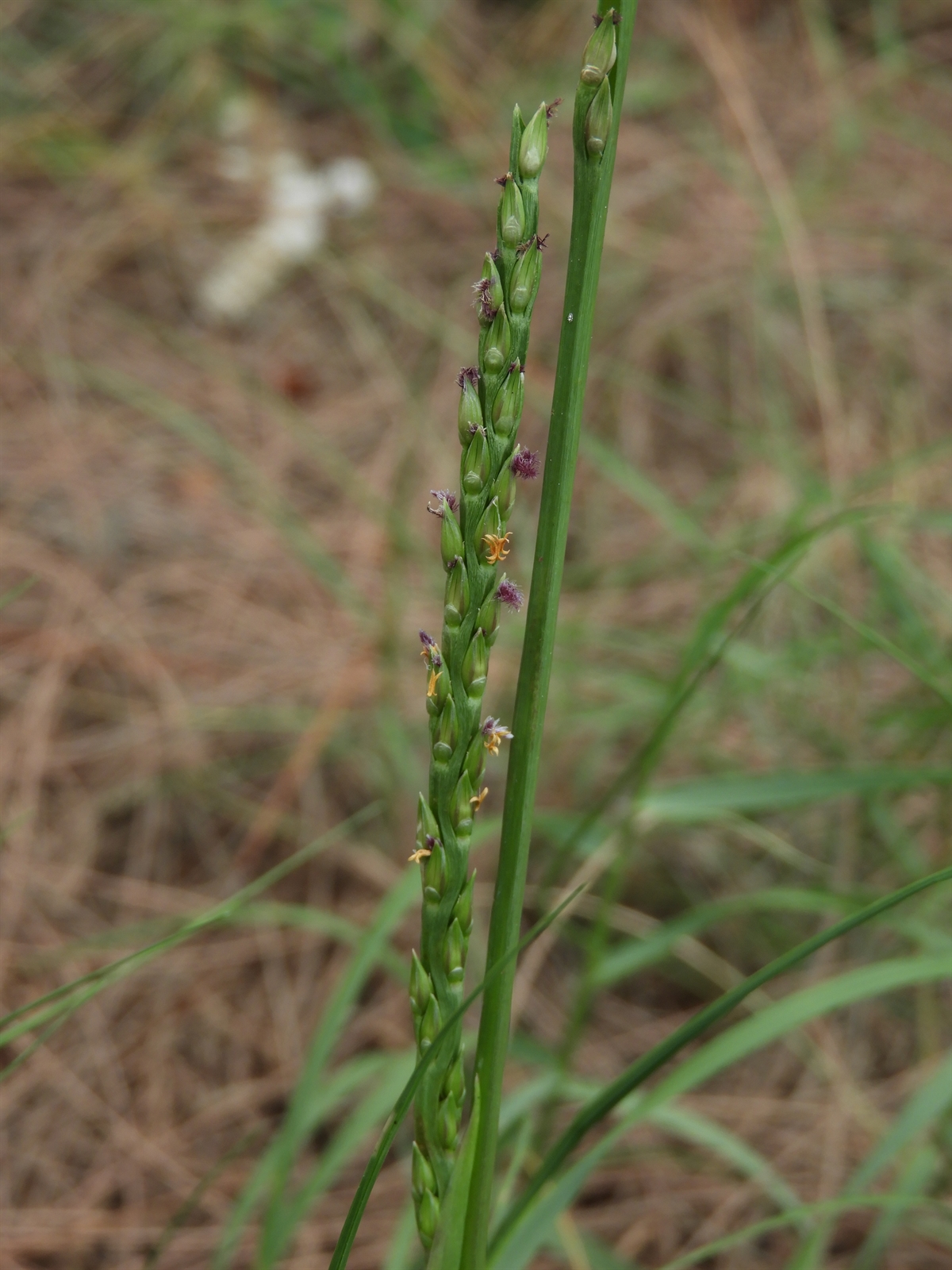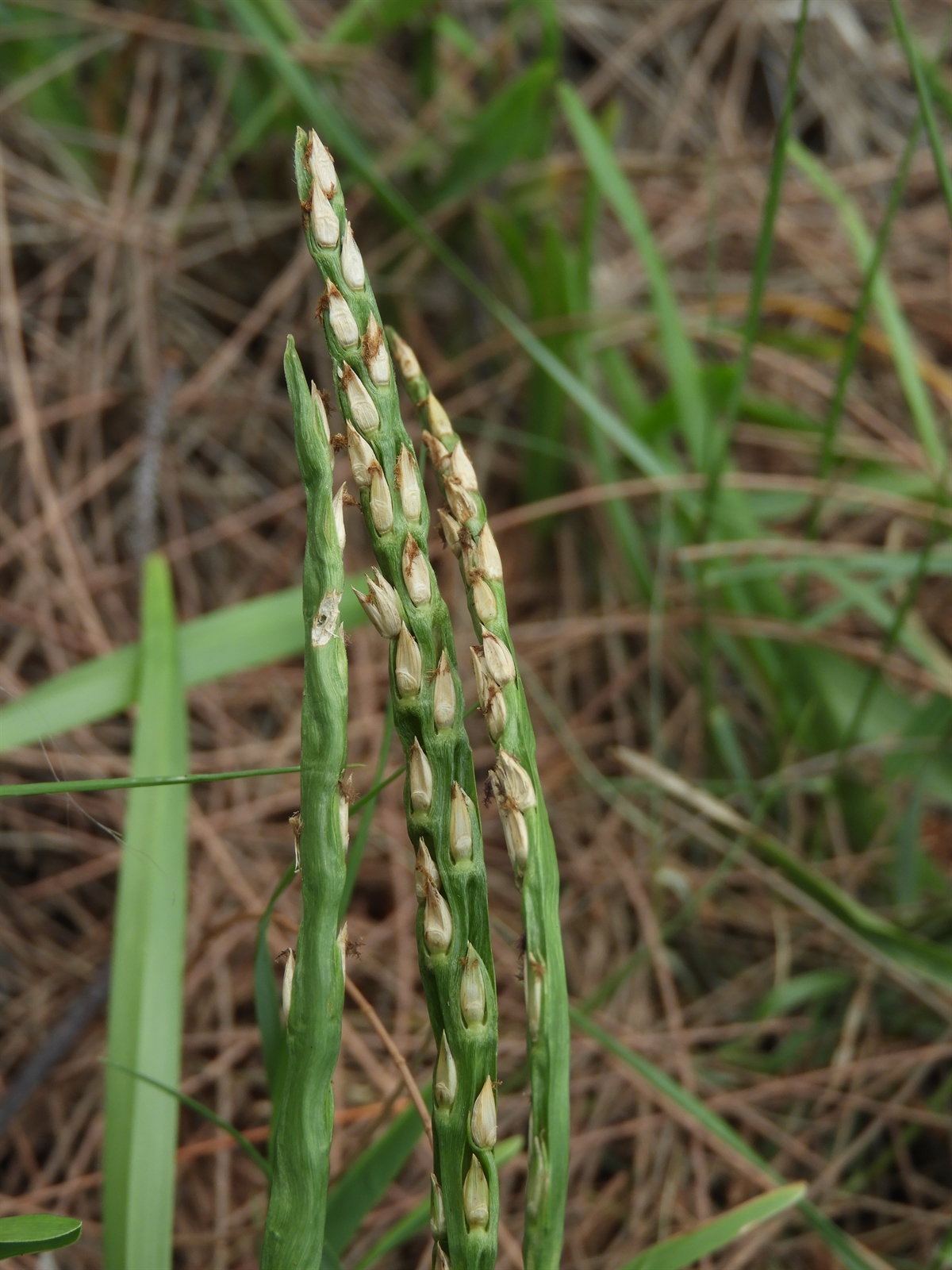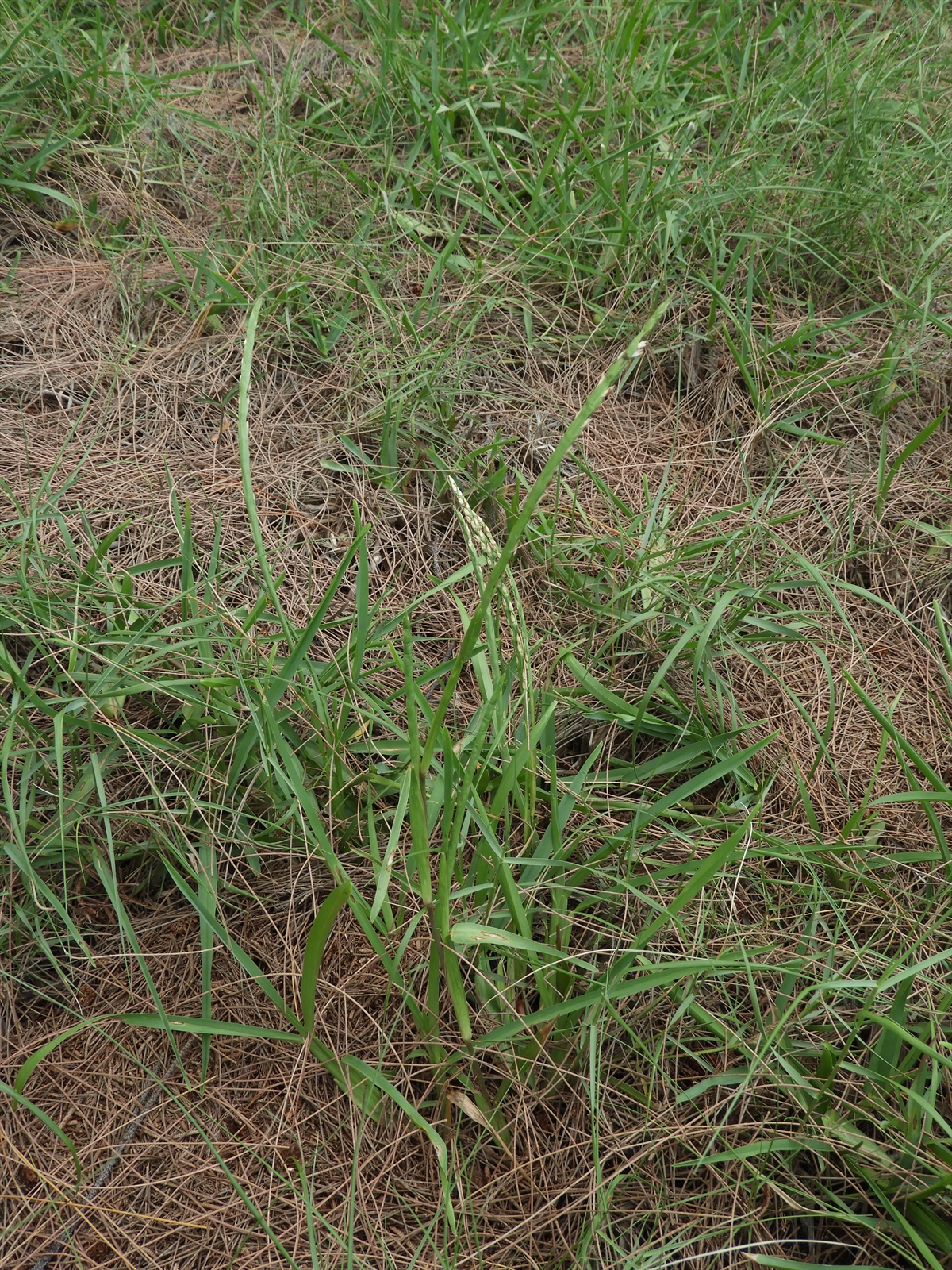Habit: Stenotaphrum secundatum grows as stoloniferous perennial to 90 cm in height when flowering rooting at the nodes. The leaves are arranged alternately to 10 cm in length (usually shorter) and to 5 mm wide, with a pubescent or glabrous basal sheath extending along the stem. At the point of divergence of the leaf sheath to the leaf blade is a membranous ligule. The leaves are parallel veined.
The zygomorphic flowers are arranged in a spike-like structure and partially embedded in the rachis. At the base of each spikelet are 2 structures called glumes. The first glume small and the second larger. In each spikelet there are flowering structures each is subtended by 2 additional structures (lemma and palea). There are two florets reduced with stamens but no functional carpels and reduced while the upper fertile, with 3 stamens and a superior ovary each with a single locule and seed. The fruit is a caryopsis.
Habitat: Stenotaphrum secundatum grows in Human Altered environments (farms, old fields, waste areas).
Distribution: Stenotaphrum secundatum is a doubtful unlikely native to the Lucayan Archipelago but does occur on most of the islands as well as the Caribbean region, the southern United States, Central and South America as well as central Africa. It grows throughout most of the world in tropical and subtropical areas.
Medicinal/Cultural/Economic usage: Stenotaphrum secundatum is not known to be used medicinally in the Lucayan Archipelago.
It is grown for lawns.


